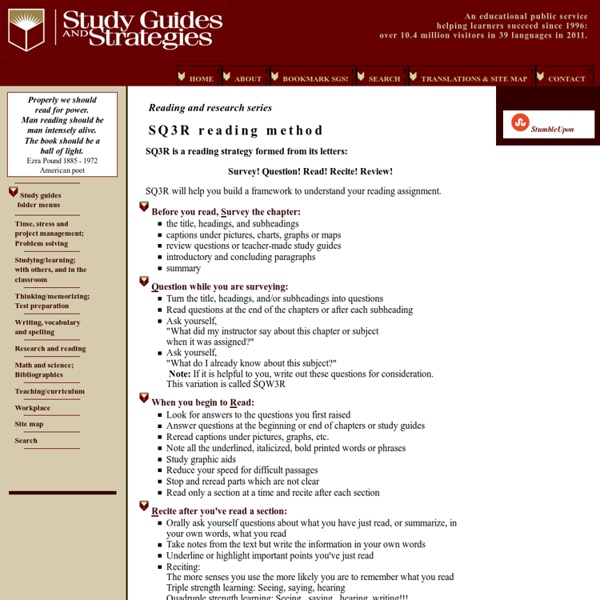The SQ3R Reading Method

Antediluvian Adventures
Rubric Cover Sheets Below you will find links to and descriptions of all the assignments we use for Choose Your Own Adventure. Click on the individual assignment links to get the full instructions and printable worksheets. The assignments are divided into three categories based on what skills you will use to complete them. 5 Point Assignments20-30 Minutes to complete 10 Point Assignments45 minutes to complete 20 Point Assignments90 minutes to complete40 Point AssignmentsAll 40 point assignments require significant work outside of class and take up to 4 hours to complete.
Online Flashcards
Mobilize your notes. Study on the bus or in line for a taco. Free mobile apps mean instant access to every note and flashcard you need. Get your score before the test. It's one thing to study a lot. The end of forgetting. Assignment notebooks have a modern, good-looking cousin. Study more. There's some irony in the two binders, four textbooks, and 22 handouts required for this semester's Environmental Studies coursework.
Interactive Graphic Organizer
Holt Interactive Graphic Organizers "Graphic organizers are tools that help your brain think." - Kylene Beers Graphic organizers are an illustration of your thoughts on paper. They can help you brainstorm, organize, and visualize your ideas. Click on a graphic organizer to download a PDF of it. Once you’ve downloaded an organizer, type in your comments and print it out. Each graphic organizer below includes Teaching Notes with lessons and tips on how to use graphic organizers in the classroom. Help with PDF Files Generating, Identifying, and Organizing Details Determining Main Idea and Drawing Conclusions Order and Sequence Comparison-Contrast and Cause and Effect Process and Cycle Diagrams Evaluating and Making Decisions Persuasive and Supporting a Position Vocabulary Miscellaneous Organizers Graphic Organizer Teaching Notes
Three Types of Questions to Build Comprehension — LitART
Literal, inferential, and evaluative questions help learners read and think in different ways. To help students monitor their comprehension, it helps to ask questions while you read. The three levels of questions are: Literal. Examples: What is the main character's name? Inferential. Examples: Why did the main character laugh? Evaluative. Examples: How are you similar to the main character? Rather than simply tell students they are right or wrong, it is better to ask students to support their answers. In a few days, I will post strategies for asking questions to groups of students. Happy Questioning!
Related:
Related:



